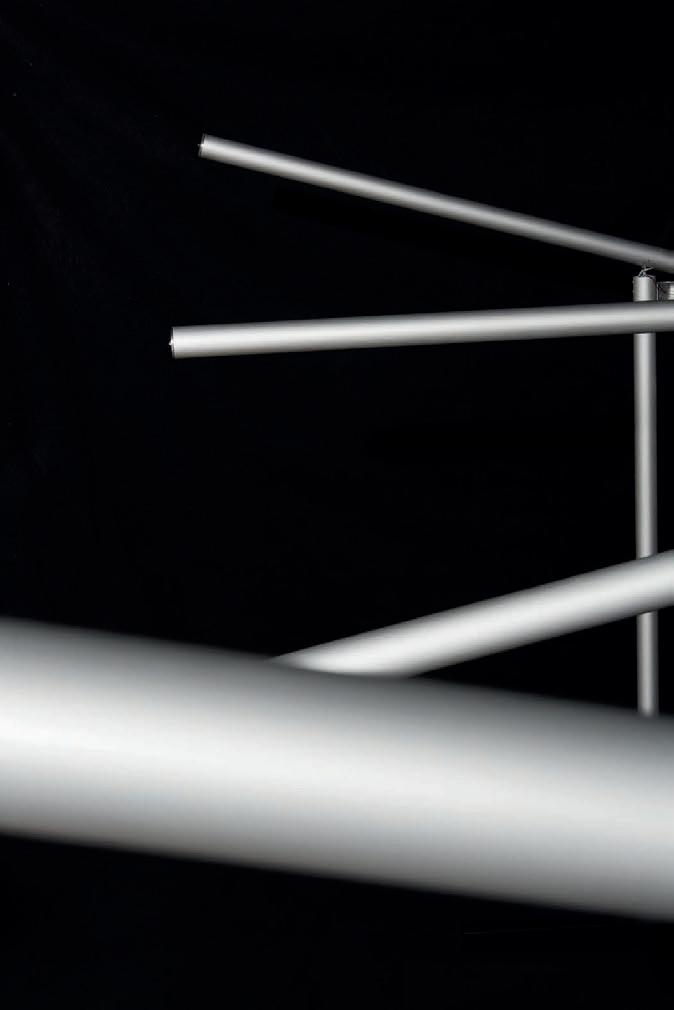
1 minute read
Lumitronome
Extinction Illuminated
Lumitronome
Advertisement
With the recycling of waste materials and sustainable energy production, Lumitronome addresses the prospect of our very coexistence – and ultimately survival – in the future. While it’s made from scrap aluminium pipes often found on bulky waste, aluminium is in fact a highly recyclable material that can be reused almost indefinitely. It’s a sustainable approach to designing new, self-generating elements that enhance the quality of living in an ecological, discreet and visually-compelling way.
The Lumitronome is a series of kinetic lamps powered by solar energy that produces a slow and gentle sense of light in motion. Lumitrons are designed as a luminaire for both various architectural applications or entirely natural environments. In interiors, they can remain still or in constant motion, creating the impression of a wave, a flock of birds, whatever the situation might call for. What’s more, they’re an experiment in creating meditative ambiences in public spaces – spaces now under threat of extinction no less.
Originally designed as a lighting system for metro stations the system is the fruit of collaboration between artist/designer Martin Bricelj Baraga with the Paris-based architectural collective BellaStock.
Lumitronome tests how we can create more environmentally friendly environments in public spaces using systems made of waste materials and only natural sources of energy – using what’s left, what comes to hand. It’s about testing the possibilities of light and movement – how to create different spatial ambiences and in so doing affect the regular, the visitor or the crowd?
47










